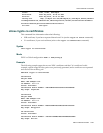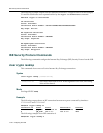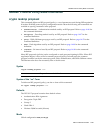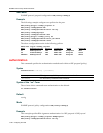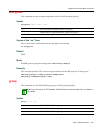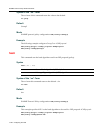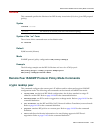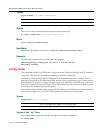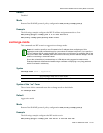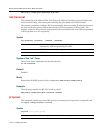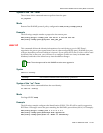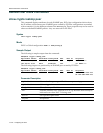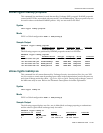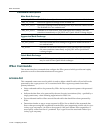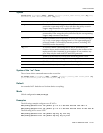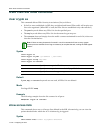
Remote Peer ISAKMP Protocol Policy Mode Commands
XSR CLI Reference Guide 14-101
Default
Disabled
Mode
RemotePeerISAKMPprotocolpolicyconfiguration:XSR(config-isakmp-peer)#
Example
ThefollowingexampleconfigurestheIKEIPaddressassignmentmodetoclient:
XSR(config)#crypto isakmp peer 2.2.2.2 255.255.255.0
XSR(config-isakmp-peer)#config-mode client
exchange-mode
ThiscommandsetsIKEtomainoraggressiveexchangemode.
Syntax
exchange-mode {main | aggressive}
Syntax of the “no” Form
Thenoformofthiscommandresetstheexchangemodetothedefault:
no exchange-mode
Default
Aggressivemode
Mode
RemotePeerISAKMPprotocolpolicyconfiguration:XSR(config-isakmp-peer)#
Example
ThefollowingexampleconfigurestheIKEmodetomain:
XSR(config)#crypto isakmp peer 192.168.57.9 255.255.255.255
Notes: It is useful to specify a user ID instead of an IP address when configuring an SA in
aggressive mode (with pre-shared keys) for a peer whose IP address is dynamic. If you specify no
ID, its IP address will be used by default. But, in that case, you will have to re-configure (with a new
entry in the aaa user database) both ends of the tunnel every time the address changes. Use the
user-id <string> command instead.
Due to the vulnerability of pre-shared keys on VPN devices using aggressive mode tunnels,
Enterasys Networks recommends instead using a certificate or employing a very long password
which is not listed in a dictionary.
main
IKEexchangemodesettomainmode.
aggressive
IKEexchangemodesettoaggressivemode.



